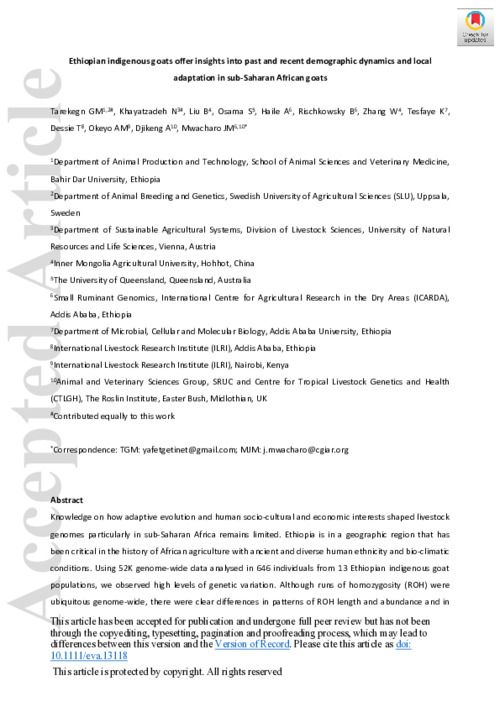Ethiopian indigenous goats offer insights into past and recent demographic dynamics and local adaptation in sub-Saharan African goats
Abstract
Knowledge on how adaptive evolution and human socio‐cultural and economic interests shaped livestock genomes particularly in sub‐Saharan Africa remains limited. Ethiopia is in a geographic region that has been critical in the history of African agriculture with ancient and diverse human ethnicity and bio‐climatic conditions. Using 52K genome‐wide data analysed in 646 individuals from 13 Ethiopian indigenous goat populations, we observed high levels of genetic variation. Although runs of homozygosity (ROH) were ubiquitous genome‐wide, there were clear differences in patterns of ROH length and abundance and in effective population sizes illustrating differences in genome homozygosity, evolutionary history, management and, past and recent population demographic history and dynamics. Phylogenetic analysis incorporating patterns of genetic differentiation and gene flow with ancestry modeling, highlighted past and recent intermixing and possible two deep ancient genetic ancestries that could have been brought by humans with the first introduction of goats in Africa. We observed four strong selection signatures that were specific to Arsi‐Bale and Nubian goats. These signatures overlapped genomic regions with genes associated with morphological, adaptation, reproduction and production traits due possibly to selection under environmental constraints and/or human preferences. The regions also overlapped uncharacterised genes, calling for a comprehensive annotation of the goat genome. Our results provide insights into mechanisms leading to genome variation and differentiation in sub‐Saharan Africa indigenous goats

